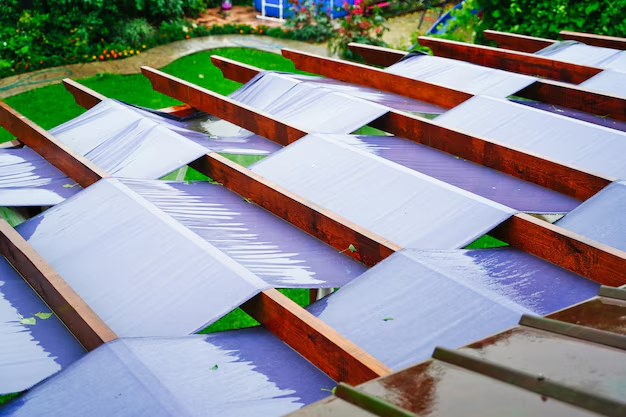Energy Efficiency Showdown: Metal vs. Shingle Roofs – Which Saves More?
When considering a new roof for your home, energy efficiency likely plays a pivotal role in your decision-making process. An energy-efficient roof can save you money on utility bills, reduce your carbon footprint, and increase your home’s resale value. But the big question remains: which is more energy-efficient, a metal roof or a shingle roof?
Metal Roofs: A Cool Choice
Metal roofs are often lauded for their exceptional energy-saving properties. Here’s why:
Reflectivity & Emissivity: Metal roofs are highly reflective, meaning they bounce the sun’s rays away rather than absorbing them. This keeps your home cooler in the summer. Additionally, they have high emissivity, which allows them to release the heat that they do absorb efficiently.
Longevity & Durability: Metal roofs can last between 40 to 70 years, reducing the need for replacement and the energy investment for new materials. This longevity makes them an environmentally friendly option over time.
Solar-Friendly: If you’re considering solar energy, metal roofs are an excellent host for solar panels, due to their strength and durability.
Shingle Roofs: An Affordable Contender
While shingle roofs may not seem the immediate choice when considering energy efficiency, they do offer some benefits:
Cost-Effectiveness: Shingles, especially asphalt ones, are generally cheaper both in initial costs and installation. Innovations like cool roofing granules can improve their reflectivity slightly.
Insulation Options: Shingles provide a decent insulation layer which, coupled with proper attic ventilation, can help maintain an even indoor temperature.
For homeowners focusing solely on initial costs, shingle roofs can be appealing. However, consider the potential long-term savings on energy bills with more efficient options like metal.
Considering the Long Term
Choosing between a metal or shingle roof also depends on the climate and your home’s specific needs:
- In warmer climates, the reflectivity of metal roofs can significantly reduce air conditioning costs.
- In cooler climates, the insulation benefits of shingles could be more pronounced.
Also, the financial incentives tied to your choice could influence your decision. Government programs may offer rebates for energy-efficient home improvements, enhancing the return on investment for a metal roof.
Discover Financial Support and Sustainable Options
Home improvements often come with a steep upfront cost, but there are financial tools and programs to help ease this burden. Whether you’re renovating for energy efficiency or simply need a more robust financial footing, here’s a quick guide to potential resources:
🌿 Sustainable Home Improvement Programs
Energy-Efficient Mortgage (EEM): Allows homeowners to finance energy-saving improvements as part of their home purchase or refinance loan.
Solar Investment Tax Credit (ITC): Offers a significant tax credit for solar energy system installations, which can be enhanced when paired with metal roofs.
💸 Financial Relief and Support Options
FHA Title I Property Improvement Loan: A fixed-rate loan used for home improvements, repairs, and even roof replacements, available to homeowners with limited equity.
Weatherization Assistance Program (WAP): Provides grants to improve energy efficiency for lower-income households.
🏦 Credit Solutions
Home Equity Line of Credit (HELOC): A flexible option to finance home improvements, including energy-efficient upgrades.
0% Introductory APR Credit Cards: These can be a short-term solution to manage upfront costs, provided you can pay off the balance within the promotional period.
With these options, you can make informed decisions on your home’s energy efficiency and financial planning, ensuring you not only save on energy but also optimize your financial health.
